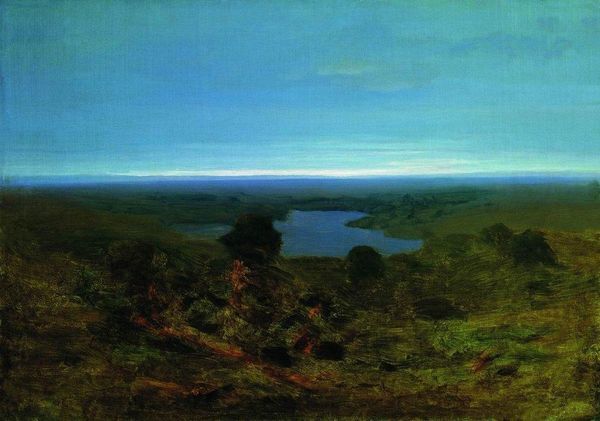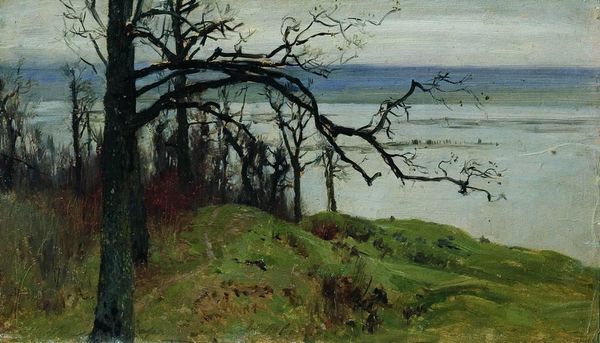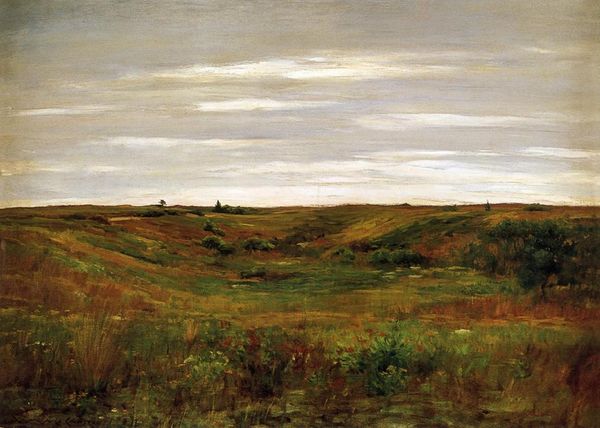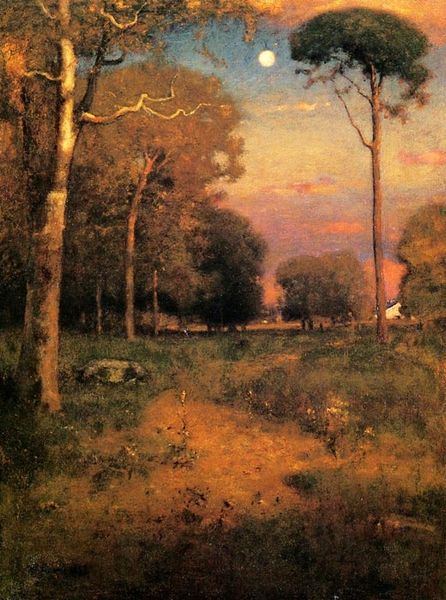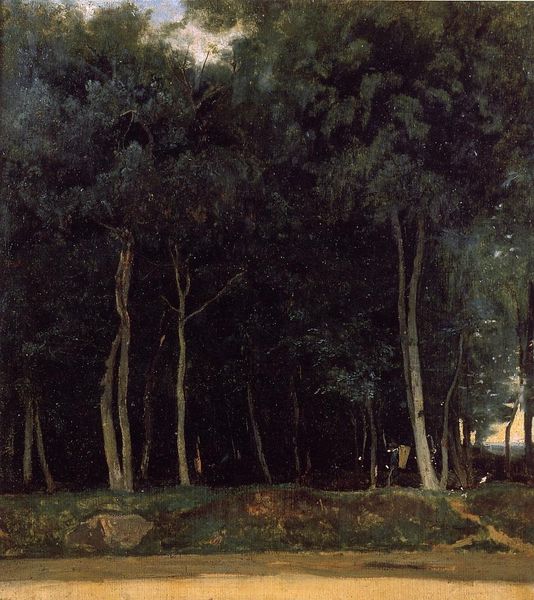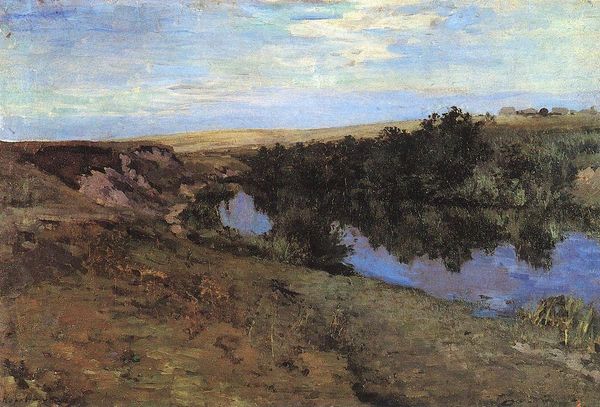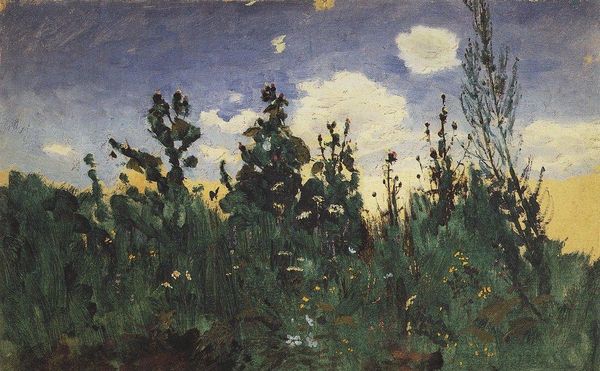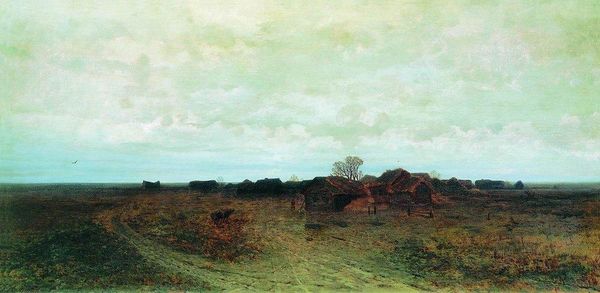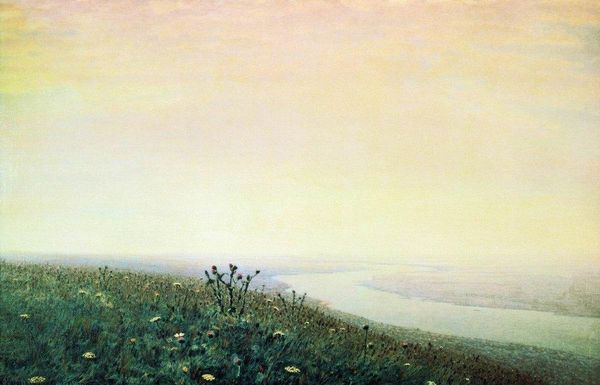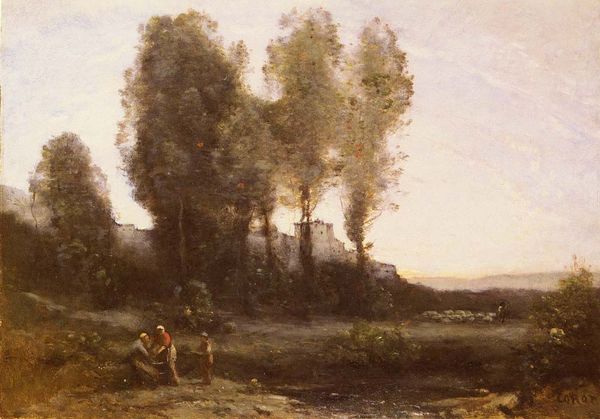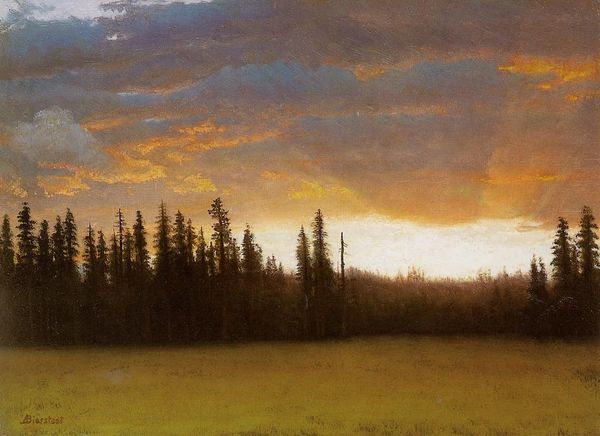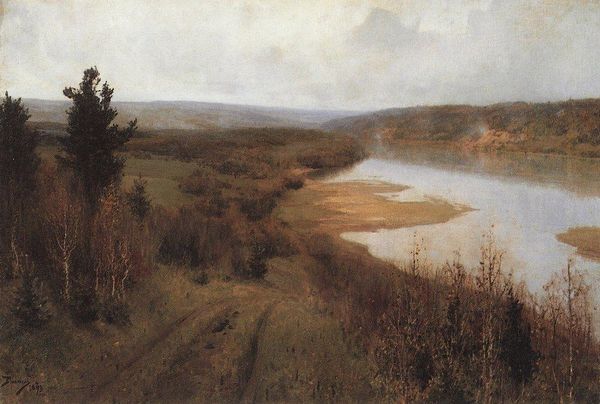
Copyright: Public domain
Editor: So, here we have Isaac Levitan’s oil painting, "Draw," created in 1899. There's a palpable sense of melancholic mystery here, stemming from the obscured landscape. The looming darkness is really striking. What do you see in this piece? Curator: This landscape isn't simply about aesthetic beauty. I think we must consider the socio-political environment Levitan was working in. Russia at the turn of the century was a place of profound inequality and political unrest. Could this darkness, this obscured view, be interpreted as a reflection of the social realities he experienced, of an obscured future, perhaps? What do you think? Editor: That's a compelling thought. The obscured view makes me think about who has access to the land and what narratives about rural life are deemed worthy of being seen and shared, and by whom. But aren’t we also projecting a modern perspective? Curator: Of course, interpretation is never a neutral act, we all bring ourselves into it, our experiences and positionality, in doing so we run the risk of anachronism but that intersection can create new powerful dialogues. Levitan, as a Jewish artist working in Russia, would have certainly been acutely aware of systemic marginalization. Does considering his identity reshape how we interpret the painting's symbolism, do you think? Editor: It does, quite profoundly. The painting goes beyond a beautiful vista and prompts questions about visibility and power. Thank you. Curator: And thank you. It is a good reminder that landscapes can be read not just as depictions of nature, but as coded maps of power.
Comments
No comments
Be the first to comment and join the conversation on the ultimate creative platform.

